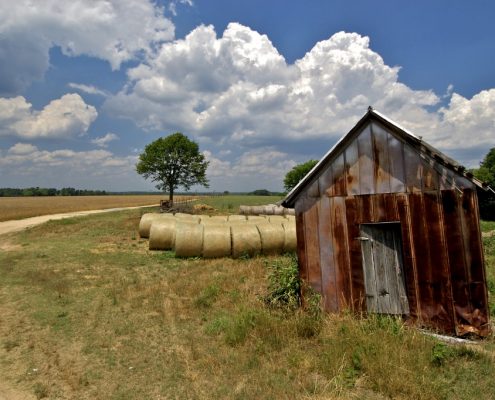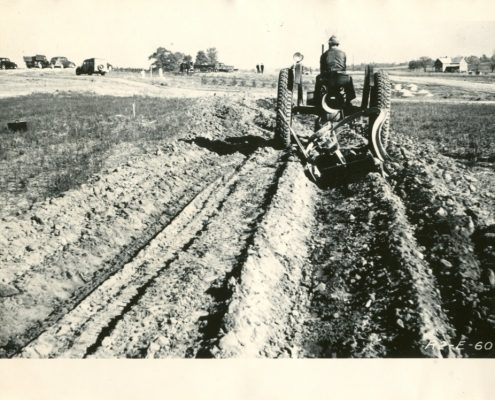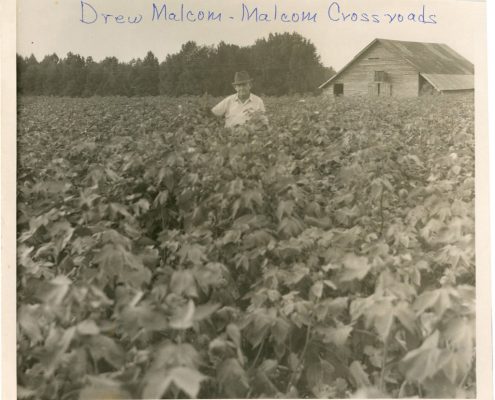 Keep Farmers Farming
Keep Farmers Farming
Farmers feed us. They employ us. They pay more than their fair share of our county taxes. They keep Morgan County beautiful. They are, in general, the reason this place is this place.
And it is big business, and one we should not forsake for something shinier. 4,665 people work in agriculture in Morgan County. Those people produced $211,000,000 in crop and livestock products in 2021 and are the reason Morgan County ranked 15th in the state for total ag production that year. In 2022, the agricultural economy in Morgan County alone was more than a half a BILLION dollars.
To keep farmers farming, Morgan County needs to retain 75,000 acres in production. How will this county do that in the face of the development pressure to which so many of our neighboring counties have succumbed? Ag Zoning and farmland protection. To fully understand the issues we are facing here in Morgan County and to assess our path forward, the Board of Commissioners and Conservancy contracted two studies:
![]() Critical Mass of Farmland Study: take away is that Morgan needs to retain 75,000 acres of productive land to sustain its existing ag/forestry industry and needs to get to 20,000 acres protected ASAP to stabilize the community during this time of heightened development pressure.
Critical Mass of Farmland Study: take away is that Morgan needs to retain 75,000 acres of productive land to sustain its existing ag/forestry industry and needs to get to 20,000 acres protected ASAP to stabilize the community during this time of heightened development pressure.
![]() Cost of Community Services Study: take away is that farmland pays significantly more in taxes than it receives in services, unlike residential development (farmland pays $5.08:$1; residential pays $0.79:$1), so we need to protect as much farmland as possible to balance out the cost of residential to our county tax base. Otherwise, our taxes will go up. This is contrary to what most people believe. Many think that residences increase the tax base. This study shows that residences actually cost the tax base.
Cost of Community Services Study: take away is that farmland pays significantly more in taxes than it receives in services, unlike residential development (farmland pays $5.08:$1; residential pays $0.79:$1), so we need to protect as much farmland as possible to balance out the cost of residential to our county tax base. Otherwise, our taxes will go up. This is contrary to what most people believe. Many think that residences increase the tax base. This study shows that residences actually cost the tax base.
To permanently protect 20,000 acres ASAP, we as a community will need to keep up its ag zoning and partially fund the permanent protection of farmland. The Conservancy has requested that the Board of Commissioners set aside funds to buy conservation easements from farmers. The BOC can use those funds to leverage federal and state dollars through the ![]() Agricultural Conservation Easement (ACEP) program. The Working Farms Fund is another program active in Morgan County, and let’s give a huge shout out to the landowners who have already permanently protected 6,000 acres through the donation of conservation easements to a land trust.
Agricultural Conservation Easement (ACEP) program. The Working Farms Fund is another program active in Morgan County, and let’s give a huge shout out to the landowners who have already permanently protected 6,000 acres through the donation of conservation easements to a land trust.
The Conservancy strongly supports ![]() CUVA and FLPA for two main reasons: 1) these programs have protected farmers’ livelihood for many years, allowing them to retain their land for farming purposes (instead of subdividing/developing to pay their property taxes); and 2) backed by the recent data about the cost of community services in Morgan County, we know that land in CUVA pays more in taxes than it receives in services (unlike residential development in the county). For these two reasons, the Conservancy has promoted the use of these programs for many years.
CUVA and FLPA for two main reasons: 1) these programs have protected farmers’ livelihood for many years, allowing them to retain their land for farming purposes (instead of subdividing/developing to pay their property taxes); and 2) backed by the recent data about the cost of community services in Morgan County, we know that land in CUVA pays more in taxes than it receives in services (unlike residential development in the county). For these two reasons, the Conservancy has promoted the use of these programs for many years.
Supporting farmers through agritourism opportunities and creating market demand for their products through a ![]() regional food hub are additional ways in which the Conservancy has supported the local farming community. The Conservancy’s Farm to Market Alliance has successfully produced Georgia’s first farm trail
regional food hub are additional ways in which the Conservancy has supported the local farming community. The Conservancy’s Farm to Market Alliance has successfully produced Georgia’s first farm trail ![]() (FARMeander) and inspired a County-funded Regional Food Hub Feasibility Study, which in turn inspired the development of
(FARMeander) and inspired a County-funded Regional Food Hub Feasibility Study, which in turn inspired the development of ![]() Farmview Market, a regional agritourism destination and one leg of the three-legged regional food hub concept.
Farmview Market, a regional agritourism destination and one leg of the three-legged regional food hub concept.






